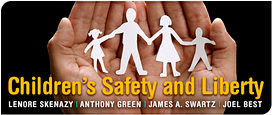If you ask Americans if they value equality, almost all will say that of course they do. And if you ask them if they value freedom, it turns out most value that as well. I’m one of those folks: I value both equality and freedom.
But that doesn’t mean that there aren’t tensions between my two values. Think about it: a perfectly egalitarian society is unlikely to be especially free, just as a perfectly free society is unlikely to be all that equal. Inevitably, there will be tradeoffs, and we have to compromise, to give up a little freedom to insure equality, or sacrifice a little equality to preserve freedom.
In my view, our discussion has arrived at this point. Americans hold that they have rights to life, liberty, and the pursuit of happiness. In her contributions, Lenore Skenazy emphasizes the importance of liberty, while Anthony Green and James A. Swartz stress the importance of life.
So far as I can tell, none of us object to regulations requiring cars to have seat belts and airbags, or houses to have smoke detectors. These are simple technical fixes that have saved thousands of lives at relatively low cost in money and inconvenience. But even Mr. Green, whose most recent contribution notes that about 4,000 young people die in motor vehicle accidents annually, did not pick up on my suggestion that a national 5 mph speed limit would markedly cut that death toll. This leads me to suspect that—rhetoric about priceless lives aside—we all understand that tradeoffs are inevitable. Do the benefits of getting rid of lanyards outweigh the costs? The answer doesn’t seem all that apparent.
We may like to imagine that our values form coherent, consistent philosophies, but imagining doesn’t make it so.

